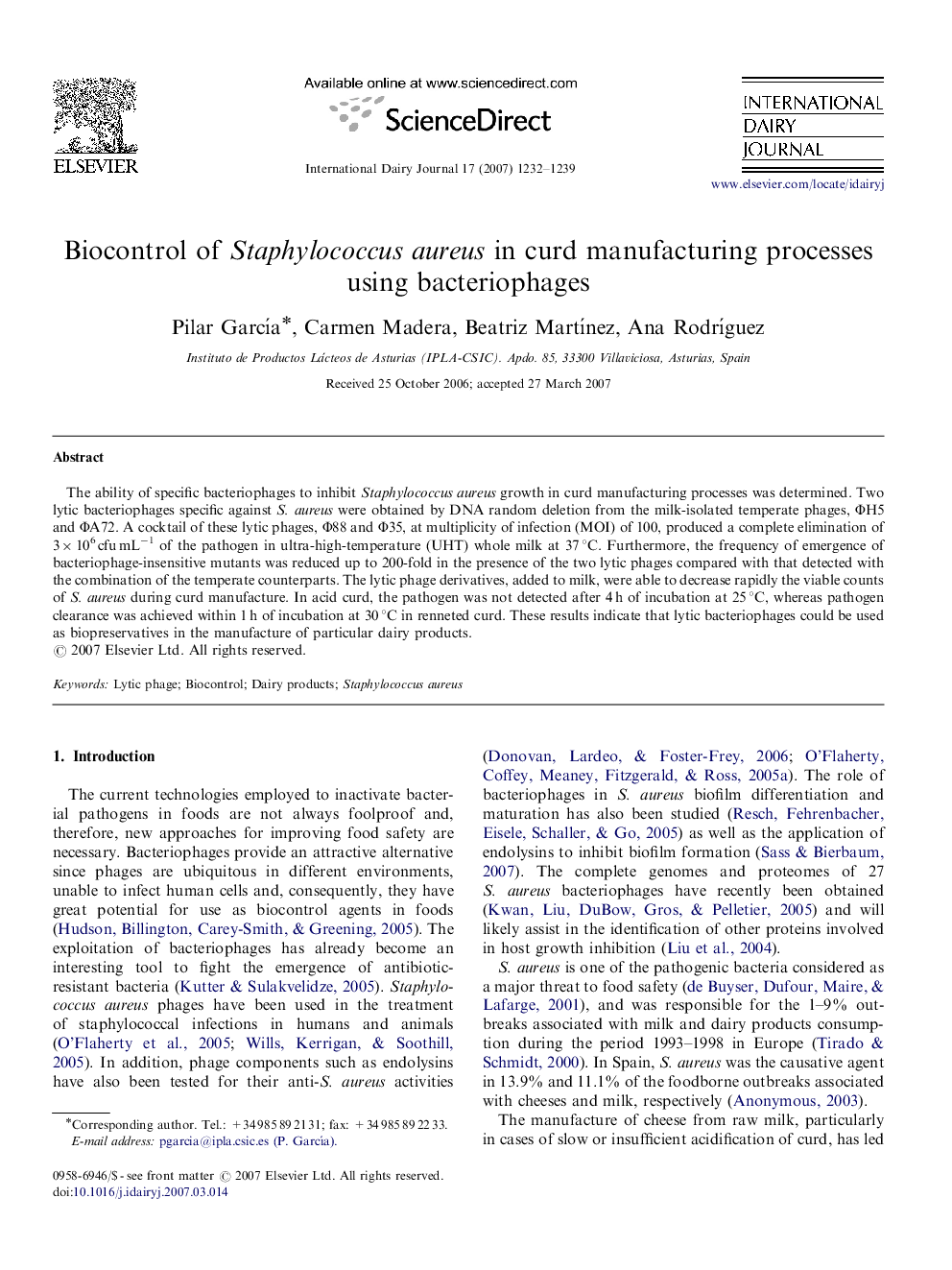| Article ID | Journal | Published Year | Pages | File Type |
|---|---|---|---|---|
| 2435690 | International Dairy Journal | 2007 | 8 Pages |
The ability of specific bacteriophages to inhibit Staphylococcus aureus growth in curd manufacturing processes was determined. Two lytic bacteriophages specific against S. aureus were obtained by DNA random deletion from the milk-isolated temperate phages, ΦH5 and ΦA72. A cocktail of these lytic phages, Φ88 and Φ35, at multiplicity of infection (MOI) of 100, produced a complete elimination of 3×106 cfu mL−1 of the pathogen in ultra-high-temperature (UHT) whole milk at 37 °C. Furthermore, the frequency of emergence of bacteriophage-insensitive mutants was reduced up to 200-fold in the presence of the two lytic phages compared with that detected with the combination of the temperate counterparts. The lytic phage derivatives, added to milk, were able to decrease rapidly the viable counts of S. aureus during curd manufacture. In acid curd, the pathogen was not detected after 4 h of incubation at 25 °C, whereas pathogen clearance was achieved within 1 h of incubation at 30 °C in renneted curd. These results indicate that lytic bacteriophages could be used as biopreservatives in the manufacture of particular dairy products.
